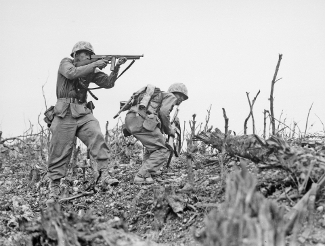When judging how their investment portfolios will perform, most investors look at economic factors to estimate future performance. They’ll look at price to earnings ratios, balance sheets, Federal Reserve monetary policy, and a whole host of other measures to assess the likelihood that their investments will gain or lose money. But what they often fail to take into account is the effect that geopolitical conflict will have on their investments, and that can come back to haunt them.
We’ve been fortunate in the US that we haven’t had to deal with war a great deal over the past few decades. Yes, the government has gotten us embroiled in conflict in Iraq, Afghanistan, Syria, Libya, and many more countries around the world. But actual military operations have been pretty quick, with the occupations after that time largely being exercises in nation-building, peacekeeping, and stabilizing the new governments. That has made investors complacent to the risks that geopolitical conflicts can play on an investment portfolio.
The last major military adventure the US government embarked on was in Vietnam during the 1960s and ‘70s. That conflict lasted for years, and cost the lives of over 58,000 American servicemen. And what was the effect on markets?
Stock markets had been in a boom from about the mid-1950s until about 1966, when the war in Vietnam was really underway. The massive amount of federal spending on war helped contribute to the stock market stagnation that persisted until 1982.
Going back to World War II, we see a similar pattern. As war raged in Europe, US stock markets fell. They plummeted even further after the attack on Pearl Harbor, reaching their nadir in early 1942, by which point they had fallen nearly 40%. It was only at the end of the war that stock markets once again passed their pre-war levels, and it took until 1954 for stock markets to rise above their 1929 highs.
Even though the US entered World War I late, US stock markets took a beating then too, falling over 20% in the year after the US entered the war. In all these major conflicts we see this same pattern, that stocks lose value upon the initiation of conflict and are lucky to make back their gains by the end of the war.
Any major armed conflict in the future will likely see the same pattern, as markets realize that a major war will siphon resources away from civilian production and into military expenditures. That’s why even the possibility of war will send stock markets spiraling downward.
But not everything is doom and gloom when war is on the horizon. Because of the uncertainty surrounding war, safe haven assets like gold benefit greatly. We all saw what happened in 2008, when stock markets lost half their value but gold made great gains. There’s no way around it, when geopolitical conflict threatens to break out into war, gold will go through the roof.
If you haven’t made the move to war-proof your investment portfolio, now’s the time to do it. No one thought that Europe was on the verge of a world war when Franz Ferdinand was assassinated, Americans of all stripes went to bed on December 6, 1941 confident that World War II was safely confined to Europe, and no one thought a tiny jungle country in Southeast Asia would result in tens of thousands of American deaths. War often occurs when we least expect it, and if you haven’t gotten your financial ship in shape by investing in gold, you may find yourself unprepared when conflict seemingly erupts out of the blue.
This article was originally posted on Goldco.





